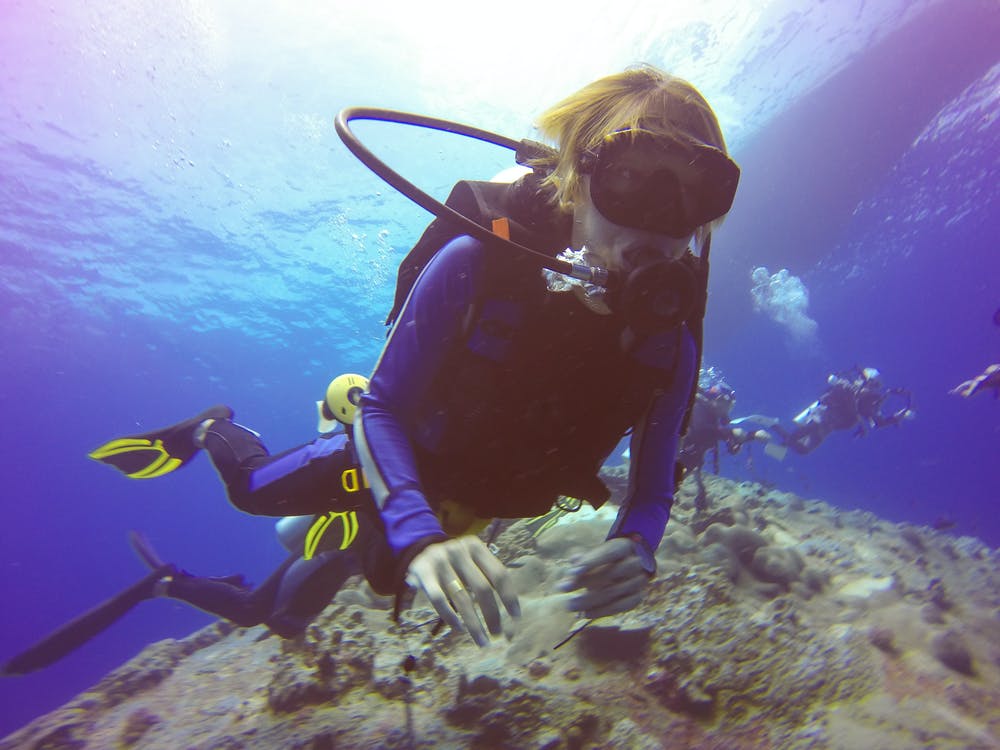Diving watches are an indispensable complement for those who practice this activity, so its main feature must be functionality.
Beyond being able to see “the time under the sea”, a good dive watch has to be a tool to facilitate the dive and ascent, in short it is part of the safety routine.
Whether the reason for diving is for sporting, professional, scientific, military, or simply for leisure and fun, it is vital that you buy the right one for your objectives.
These faithful underwater adventure companions have gone through a long process of change and evolution and it is interesting to learn about it.
History of Dive Watches
The practice of diving is an activity as old as navigation and it should be noted that in the beginning it was carried out in a very rudimentary way and this took many lives.
It was not until 1907 that Haldane’s decompression tables were published.
Haldane’s decompression tables
were published to resolve some issues related to decompression sickness.
A parenthesis to explain what is decompression sickness?
When diving, the body begins to absorb nitrogen, which dissolves in the tissues and when the ascent is made, it must be gradually eliminated through respiration.
To avoid decompression sickness, you should ascend at a speed of no more than 18 meters per minute, although a rate of ascent of 9 meters per minute is recommended.
This prevents the nitrogen from returning to its gaseous state and can be exhaled in the respiratory process, otherwise harmful bubbles are produced for the organism.
We continue with the Evolution of Diving and Watches.
As for diving suits, they were made of quite heavy alloys in order to withstand the pressure, but this characteristic meant that the diver’s mobility was reduced.
There was no adequate system for breathing underwater, other than pumping air through a tube connected to the surface.
In 1945, Gagnan and Cousteau commercialized the first aqualung, and along with the invention came the need to measure dive time, as well as decompression stops during ascent to the surface.
It means that, in 1945, they already had more advanced immersion tools but not a watch capable of supporting them in the process.
The first Diver’s Watch.
The Rolex Oyster is one of the first watches to be created to resist the action of water, the piece is based on a design with a screw back that closed as tightly as an oyster.
The founder of Rolex, proposed to the sportswoman
Mercedes Gleitze
to take the watch with her when she swam across the English Channel to prove its reliability.
Although the Rolex Oyster was not a watch specifically created for diving, it set the standard in terms of water resistance.
Actually, the first watch created specifically for diving was the Omega Marine and the one in charge of demonstrating its quality was the underwater explorer William Beebe.
In the various tests carried out in Lake Geneva, the Diver’s Watch withstood a 30-minute dive to a depth of 73 meters.
At last, what divers have been longing for: dive watches!
BlancPain’s proposal in Basel 1953.
Despite the advances in diving watches and equipment, there was still a long way to go in terms of technology.
In the 1950s, at the beginning of the Cold War, the French Navy and the French secret service created a unit of combat divers.
It was necessary for this elite group to have adequate equipment for the missions and new diving techniques.
And although they had depth gauges and compasses, there was not yet a watch with sufficient performance to be considered sufficiently reliable for diving.
It is for this reason that the captain in charge met with various manufacturers to expose his need and motivate the manufacture of an appropriate diving watch.
What did the elite diving group need?
It required a tool that would make it easier to read the time underwater, in addition to specific features:
- White indicators on black background
- Luminescent material in indicators and hands.
- A graduated rotating bezel
- A luminous point at 12 o’clock.
This last request was with the idea that when the diver turned the bezel to align the luminous point with the minute hand, it would indicate the elapsed time and how much time was left to complete the dive.
The Bezel, the Secret Weapon of Blancpain Diving Watches.
He presented his idea to several brands until he came to talk to the right person: Jean-Jacques Fiechter, director of the manufacture Blancpain, who was also a diving enthusiast.
This allowed Fiechter to introduce some improvements to the design proposed by the captain, especially one in particular that would later define the standard of the genre: the bezel.
BlancPain proposed that it had to be unidirectional to avoid accidental movements that could lead to errors in the reading, a situation that could endanger the diver’s life.
Thus was born the legendary “Fifty Fathoms ” , a watch that offered at that time a maximum depth (91 meters).
This design was officially unveiled at the 1953 Basel Fair, simultaneously at the event the Zodiac Seawolf, anothermodern diving watch, was also presented.
Later that year Rolex counterattacked by launching the famous Rolex Submariner.
However, both the Seawolf and the Submariner had bidirectional rotating bezels, as Blancpain had taken the lead in patenting the unidirectional.
 Rolex Submariner Diving Watches An Icon!
Rolex Submariner Diving Watches An Icon!
This watch was born after almost 30 years of research by Rolex, the initial proposal presented in 1954 underwent numerous improvements.
One of the most notable is that it allows diving to a depth of 200 meters, 100 meters deeper than the first Rolex Submariner model.
This model is an icon not only in the field of diving but in general in the world of modern watchmaking, for this reason it is one of the most imitated models and you have to be very careful with it to avoid falling into a scam.
If you want “Fifty Fathoms, you can count on the support of Adeler Joyeros to help you make a great investment.



 Rolex Submariner Diving Watches An Icon!
Rolex Submariner Diving Watches An Icon!